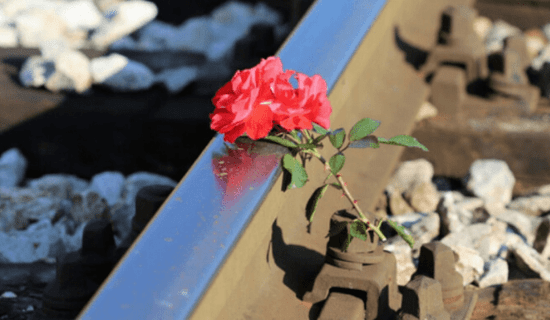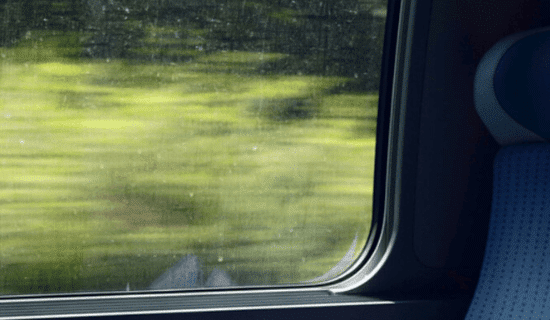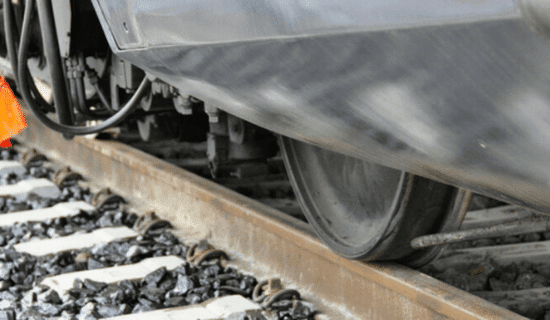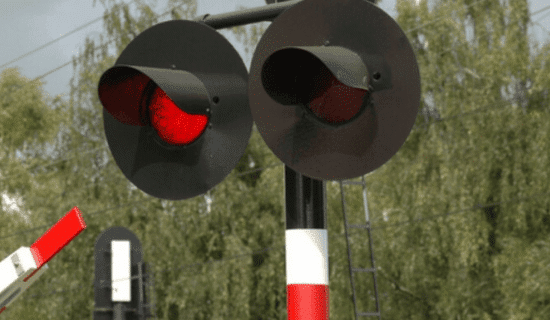Railway Accidents: Causes and Safety Measures
When railway accidents occur, regardless of the causes or the safety measures that were in place, we can’t help but wonder about the safety of train travel. After all, when a vehicle as large and heavy as a train crashes, the resulting injuries and loss of life can be both tragic and extensive. What does the data show regarding the safety of trains? Why do train accidents happen, and what steps could be taken to make train travel less dangerous? Let’s take a closer look at the facts and statistics, including railway accident causes and safety measures that can prevent injuries and fatalities.
 Causes of Rail Accidents
Causes of Rail Accidents
Recent studies have shown that although fatalities in railway accidents are relatively uncommon, the number of passenger injuries is increasing. Sadly, the rate of passengers injured while traveling on Amtrak trains is a shocking 58 times higher than for French rail passengers. Although high-profile accidents involving passenger trains more regularly make the news, studies show that a person or vehicle is struck by a train about every three hours. Trend data don’t provide much comfort, as The National Transportation Safety Board reports that deaths resulting from injuries sustained in train wrecks were up 6% in 2012.
So, why do rail accidents happen? The most common reason a train accident occurs is a derailment. The consequences can be more severe, depending on a number of factors, including the type of track involved (main, yard, siding, or industry track), the length of the train, the number of cars which leave the track, the train’s speed at the time of derailment, and the location of the first car when the train derails. Other causes include equipment and track problems, including damaged welds or rails, bearing failures, and malfunctioning wheels. In addition to mechanical failure, a train can crash because of communication or signal problems, and human errors made while operating the train.
Although trains have become more automated, operator error continues to contribute to accidents. Some examples of personal injuries due to train accidents include:
- A freight train and a passenger train collided in South Carolina in 2018, because a switch was in the incorrect position, resulting in the death of two passengers and injuries to dozens of others.
- In December 2017, three passengers were killed and 62 passengers and crew were injured when an Amtrak passenger train derailed on a highway overpass while traveling 78 miles per hour in a 30 mile per hour zone. Eight people driving on the highway below were also injured.
- Over 200 passengers on two New York City-area commuter trains were injured and one killed in late 2016 and early 2017 after engineers fell asleep on the job because of undiagnosed sleep apnea, causing them to take their attention away from the task at hand.
- One of the most tragic train crashes in Southern California took place in 2008 when an engineer was texting while driving, resulting in a collision between a freight train and passenger train when he missed a stop signal. In that accident, 25 people lost their lives and 135 others were injured.
U.S. Railway History and the Need for Safety Regulations
To understand the state of today’s U.S. railways, including train safety, it’s important to understand a bit about the history of our railroad system. America has a long, storied and deeply nostalgic relationship with trains. The modern railway industry in this country was born in the 1830s with the construction of the first mechanical passenger train. By 1850, over 9,000 miles of railroad tracks had been laid across the United States.
That figure had more than tripled just over a decade later, in 1861, when the Civil War began, with 22,000 miles of railroad tracks running across the Northern states and 9,500 miles across the South. Railways were a major part of the Civil War, as the Confederates depended heavily on trains for transporting munitions and other supplies. The Union army was able to take advantage of the fact that southern railways were disorganized, in disrepair and deteriorating fast, and this ultimately helped them win the war.
Post-war, more and more companies began using railroads to expand their business interests. It was during this time, as railway accidents occurred regularly and safety measures were nearly nonexistent, that the need for regulations became clear.
The railway industry has evolved quite a bit in the 150-plus years since. Environmental and financial concerns over the use of coal, a nonrenewable energy, along with other factors, have put the U.S. railway industry in a tricky position as far as adapting to shifting resources, increasing regulations, and other industry demands. Trains are still heavily utilized all over the country, including commuter and passenger trains, as well as freight trains that transport products, chemicals, and other items. Over time, train safety has emerged as one of the top concerns of the railroad industry as pressure to modernize increases.
 Train Accident Statistics
Train Accident Statistics
The Association of American Railroads (AAR) reports rates of train accidents, employee injuries, and grade crossing collisions. Grade crossings are intersections where railroad tracks and roadways cross each other at the same level; grade crossing accidents are typically collisions between trains and smaller vehicles like cars, trucks, or buses. The Office of Safety Analysis within the Federal Railroad Administration (FRA) maintains a database of train accidents and injuries and statistics about safety trends. The National Transportation Safety Board also keeps records of railway accidents.
If you are curious about the safety of train travel, here are a few findings recently reported by these agencies:
- About sixteen Americans lost their lives because of a train each week in 2014, which was up 17% over the year prior, representing the most fatalities since 2007.
- 2014 saw the largest number of non-passenger deaths of individuals struck by trains—255—in the four decades the FRA has been keeping records.
- Of the 575 people who died on railroads in the same year, 70% perished in an accident involving a freight train.
The vast majority of railroad fatalities across the country actually occur not as a result of dramatic train crashes or derailments, but when trains accidentally strike individuals who are trespassing on railroad property. Still, rail safety has room to improve. Train accidents may be occurring with less frequency, but they still happen, and when they do, results can be devastating.
 Railway Accidents: Causes and Prevention
Railway Accidents: Causes and Prevention
Causes of railway accidents are many and varied. As discussed earlier, train derailments can occur due to improper maintenance of railroad tracks, faulty equipment, a mechanical malfunction, or a collision with another train. Trains can collide with cars, trucks, and other smaller vehicles at grade crossings. These collisions often occur when the driver of the smaller vehicle disregards train signals or warning signs and chooses either to idle too close to the tracks or to drive over the tracks at an inopportune moment.
Train accident fatalities can also result from individuals on foot doing something dangerous, such as trespassing on railroad property or standing on or crossing railroad tracks at the wrong time. It takes lots of time and a long distance for a high-speed train to come safely to a stop, so a person or animal that comes too close to the tracks at the wrong time can cause a disaster. Still other railway accident causes include negligence on the part of the train operator, operator error (such as excessive speed or failure to brake properly), collapsed bridges, and so on.
Fortunately, train safety has become a priority for the railroad industry. Train operators are now subject to more in-depth training time and stricter regulations than ever before. Industry regulations and oversight by the FRA are also more extensive. The FRA now oversees equipment and track inspections as well as signaling systems, employee certification, the speed at which trains operate, and more. FRA and state inspectors work together around the country to evaluate railroad tracks and other facilities to ensure trains are being operated in accordance with safety regulations. Several other governmental entities, including the Department of Homeland Security, also have oversight over railway safety and regulations.
Ever-evolving technologies also play a big role in increasing train safety. Some of the newer technologies being used in the name of improving safety include both specialized vehicles and detectors that can detect flaws in railroad tracks and the ground beneath the tracks. Data related to individual train cars is also more detailed than ever, which means that sophisticated information technology systems can now flag specific cars in need of repair. Each of these technologies is designed to prevent train accidents before they have a chance to occur.
One safety initiative, a system of train control technology called Positive Train Control (PTC), has been in the works in Congress and railways around the U.S. since 2008. Some railroad lines already utilize PTC, and by the end of 2018, all Class I main lines that handle either hazardous materials or passenger trains (or both) are required to implement PTC. (Class I railroad lines are those that handle over 5 million gross tons annually.) However, as many as two-thirds of the 29 U.S. commuter railroads may not meet the deadline by the end of 2018.
PTC is designed to prevent several types of train accidents, including collisions between trains, grade crossing accidents, and train derailments due to high speeds but is in operation on only 45% of tracks owned by freight railroads and 24% of tracks owned by passenger railways.
The train derailment in Washington State in December 2017 may have been prevented if PTC had been activated at the time of the crash (it had already been installed on the tracks). It would have alerted the engineer to slow down before the curve and would have automatically applied the brakes if the engineer failed to do so, according to the preliminary report issued by the NTSB. The FRA may grant an extension until 2020 for commuter railroads if they meet certain requirements. However, a report by the U.S. Government Accountability Office released in February 2018 said that 19 of the 29 commute railroads may not meet the deadline or may not qualify for the extension.
 Train Safety: Looking to the Future
Train Safety: Looking to the Future
Overall, according to statistical data from many of the major railway organizations and transportation authorities, train safety has vastly improved over the years. These improvements have come about through increased regulations and oversight, as well as the continuing adoption of more effective safety technologies. Additional measures can help improve passenger safety and reduce deaths and injuries.
Specific advances that can help avoid future railway tragedies include:
- Onboard detection systems, including wheel impact load detectors and hot bearing detectors, that alert engineers of faulty components
- Ultrasonic and geometric track inspection systems that gather data with lasers to help more accurately schedule and identify needed repairs
- Sensors at railway crossings to detect when someone enters, by foot or by car, an area a train will cross
- Drones to conduct aerial inspections without the need to conduct on-track monitoring
- Workplace practices that emphasize passenger safety, including improved screening of job candidates, better training and enhanced reporting of accidents
Slack Davis Sanger Advocates for Victims of Train Accidents
Data that demonstrates increased train safety is no comfort to the families and loved ones of anyone who has been seriously injured or killed in a railway accident. If you or someone you care about has been affected by a railway accident and you’re considering filing a claim, the experienced, caring, and compassionate attorneys at Slack Davis Sanger can give you advice regarding your potential case. We have the practical and technical knowledge needed to help you make the right decision about how to best pursue legal action, and can help victims and their families receive compensation for their injuries, in addition to compensation for emotional distress.

The firm handles cases involving catastrophic personal injuries and deaths. Our work spans three decades of handling airplane and helicopter crashes, truck and car accidents, oilfield and construction accidents, and other devastating accidents. We try lawsuits throughout the country in both federal and state courts and have recovered hundreds of millions of dollars for our clients. To date, we have handled or tried cases in 47 states, read more about our attorneys and firm.
